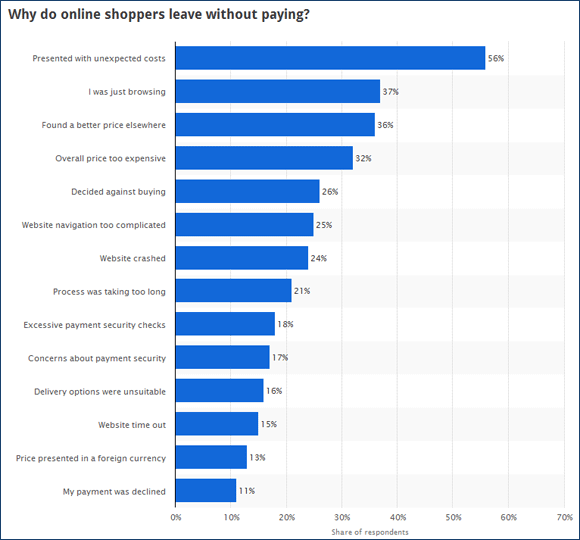Earlier this month The Wall Street Journal published an interesting article where Miriam Gottfried drew an analogy between a coupon affiliate and a sandwich shop assistant compensated on performance basis. Here’s how the reporter’s illustration went:
Imagine you own a sandwich shop and want to bring in new customers. You recruit five assistants and give them coupons to distribute, promising to give each credit for sales they generate. Four patrol the neighborhood, distributing coupons door to door. The fifth sits right outside the store, handing them to customers as they walk in.
Predicting who will get the most sales isn’t rocket science. But how much value is that fifth assistant actually providing?
The article then went on into analyzing RetailMeNot, a famous coupon affiliate who went public on July 18 2013 “at $21 per share” and “in its first day of trading its stock gained 32%” [source]. On February 27-28 2014 the price was at its peak ~$47 a share. In early July 2014, however, RMN’s share prices dropped to its lowest point in 12 months [details here]. Hence, the WSJ’s look into the company, and what may have affected the drop.
You may read the full article here, but in my today’s post I’d like to touch upon a few important areas brought up in this article.
Last Click Rule / Attribution
The article described RetailMeNot as an affiliate that “generates the vast majority of its sales from commissions on online transactions on which it receives ‘last-click attribution'” which is “when its site is the last place a shopper clicks before making a purchase.” They are right on the money here.
The “last-click” model which is currently the prevalent rule around the industry is indeed a foundational element which allows coupon affiliates to take advantage of the “last minute coupon search” customer behavior. However, it is important to understand that advertisers do not have to have their affiliate program structured in a way where they would just pay any affiliate that drives that last click. To avoid the above-referenced last-minute coupon search problem, merchants can set attribution rules of their own, whereby affiliates who drive the customer “back” to the shopping cart after he/she has gone to a search engine to look for a coupon, do not get credit (or get only a portion of the full commission, whereas the rest goes to affiliate who originally influenced the buying decision, or introduced the customer to the brand). If you are not familiar with how this works, take a couple of minutes to view ShareASale’s video on their “Tags & Rules” solution which allows advertisers to tie affiliate commissions to time-frames as well as click behaviors and patterns (pay special attention to the “1 Minute Rule” described there).
Other Solutions
Many of the larger (and smaller but sophisticated) advertisers with affiliate programs are already also employing other technologies to avoid the “assistant outside the store handing coupons to customers as they walk in” situation described by The Wall Street Journal.
Some suppress the coupon/promo code field altogether (unless the customer originated from a site like RetailMeNot and other coupon affiliate), others display coupons right on their own site (like Macy’s does), others also create dedicated “coupons” pages to outrank coupon affiliates on “TM + coupon” type of search phrases (see JCPenney’s example below), yet others offer no coupons altogether, and/or keep coupon affiliates out of their affiliate programs.
There are also some merchants that would drop coupon affiliates’ commission three- or four-fold. However, this does not really resolve the problem of the last-minute coupon search, as similarly to this situation the affiliate cookie still gets set. And while there may/will be financial benefits for the merchant, it will hurt other affiliates — those who may have influenced the purchaser earlier in the clickstream.
Shopping Cart Abandonment
Finally, I cannot omit this important area which is brought up towards the end of the Wall Street Journal article in question. The “so-called shopping-cart abandonment” is a serious problem faced by every single online merchant. According to today’s Fireclick Index data it exceeds 69% (see the below chart) which matches Vibetrace’s estimates which say that in 2014 the shopping cart abandonment rate reaches 69.50% [source].
This phenomenon is, actually, much more complex than consumers simply giving up “on purchases once they see the total.” Beyond the totals as well as shipping costs and/or taxes, some are comparison shopping, others get uncomfortable with the checkout process, the website’s navigation, or face payment-related difficulties, and then there are also those who find the delivery options unsuitable, or are influenced by one (or several) of the 14 factors ranked on the below-displayed Statistia’s chart:
If and when a coupon affiliate, or a retargeting affiliate, or a remarketing affiliate brings back that customer hours or days later (with a help of a coupon, banner ad, email, or something else), there frequently is value in that, and they are worth compensating.
Conclusion
To make the most of your affiliate program and the different types of affiliates in it, manage it!! Don’t let it fly on its own relying on the last-click-wins or some other preset/default rule. Measure it and manage it. Only then it will yield incremental fruit. If you need external help with it, email me.



Pingback: Marketing Day: New Study From IAB, La-Z-Boy's CMO Interview & Shakira Beats Volkswagen
Hi Geno,
You mention Shareasale offers the possibility to change attribution settings, but do you know about any other (European) platforms that offer the same?
Thanks!
Rosanna,
Look also into Impact Radius, Performance Horizon Group, as well as such European networks as Affiliate Window and WebGains.
Thanks Geno! I’ll look into it.
Pingback: Top Ten List of Affiliate News - David Letterman Style
http://en.wikipedia.org/wiki/RetailMeNot : Much of RetailMeNot’s revenue comes from their high rankings in Google’s search engine. Given Google Venture’s investment in RetailMeNot, there has been controversy as to whether these ranks are earned. There is also controversy around the last click attribution model from which RetailMeNot earns significant revenue.
Retailmenot uses click-to-reveal (you must first click on the coupon code to reveal it, then Retailmenot stuffs cookie into your web browser). Isn’t it against the terms of service of most affiliate programs?
Sure Retailmenot displays a lot of merchants, but that doesn’t mean that they have affiliate relationship with all of the merchants.
I wonder how many merchants enrolled Retailmenot into their affiliate programs, and how many declined them out of the total number of merchants displayed on the Retailmenot website?
One could argue if a coupon affiliate creates value or not.
It surely creates value for the shopper, because he will get a discount.
And it reassures the purchase decision. An affiliate website could rank high for the search term “blue widgets coupon”, then use a headline something like this:
“Looking for Blue Widgets coupons? Don’t but Blue Widgets until you read this article! […] So Red Widgets are much better than Blue Widgets. Here is a coupon code for Red Widgets: etc.”
But no, a coupon affiliate website will advertise the Blue Widgets company and not the Red Widgets company!
And yes, the very high shopping cart abandonment rate means that not every shopper will buy who search for “merchant name + coupon”.
Even if someone is searching for “merchant name + coupon”, that doesn’t mean he will purchase anything!
So yes, the best way is to manage affiliate programs according to this problem. The last click wins is a bad idea. Advanced platforms can also alter the commission level if only a few minutes passed between the affiliate link click and the purchase.